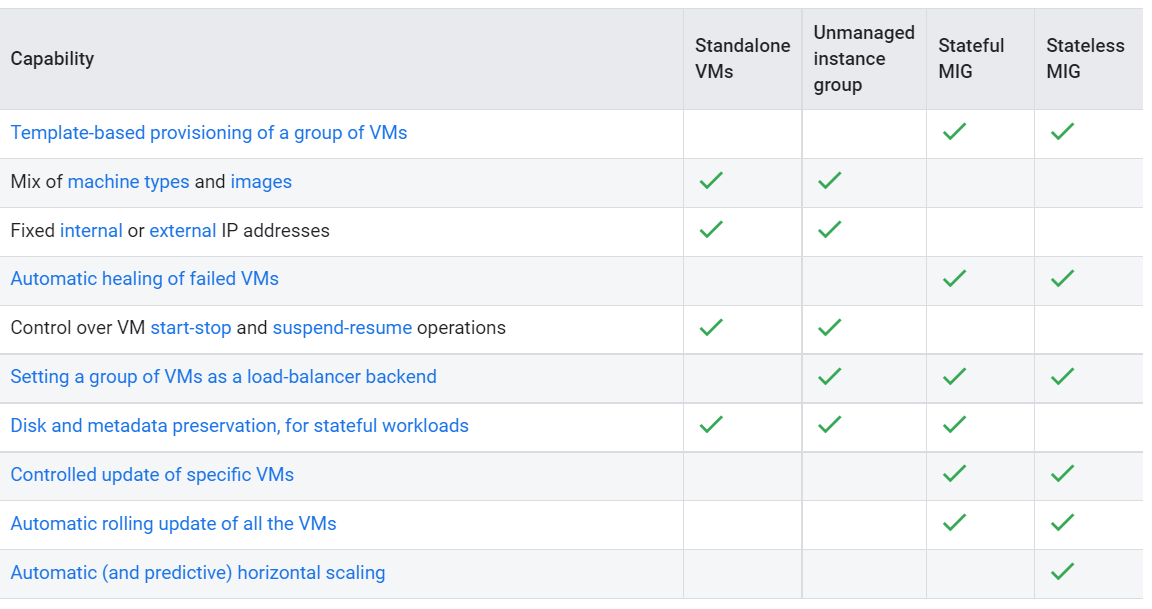Compute Engine Deployment Options for Predictive Horizontal Scaling
Question
Which of the below listed compute engine deployment options provides the feature of “predictive horizontal scaling”
Answers
Explanations
Click on the arrows to vote for the correct answer
A. B. C. D.Correct Answer: A.
Option A is correct.
Stateless MIG provides the feature of “predictive horizontal scaling”
Refer to the snapshot below for details.
Option B is incorrect.
Stateful MIG does not provide the feature of “predictive horizontal scaling”
Refer to the snapshot below for details.
Option C is incorrect.
The Unmanaged Instance group does not provide the feature of “predictive horizontal scaling”
Refer to the snapshot below for details.
Option D is incorrect.
Standalone VMs do not provide the feature of “predictive horizontal scaling”
Refer to the snapshot below for details.
Reference:
https://cloud.google.com/compute/docs/choose-compute-deployment-option
Among the listed compute engine deployment options, the stateless managed instance group (MIG) provides the feature of "predictive horizontal scaling."
Predictive horizontal scaling is an advanced autoscaling feature that uses machine learning algorithms to predict traffic patterns and scale resources proactively before traffic spikes occur. This helps to ensure that the application can handle traffic spikes smoothly and prevent overprovisioning, which can lead to unnecessary costs.
Stateless managed instance groups are ideal for applications that can handle request interruptions or are designed for stateless workloads. With stateless MIG, you can create autoscaling groups that automatically scale based on CPU utilization, HTTP traffic, or custom metrics. Predictive autoscaling helps to reduce latency and increase application availability, ensuring that your application can handle traffic spikes.
Stateful MIGs are not designed for predictive horizontal scaling because they are used for workloads that require persistence and have a stateful connection between the client and the server. Unmanaged instance groups and standalone VMs also do not provide the predictive scaling feature.
In summary, the correct answer is A. Stateless MIG provides the feature of predictive horizontal scaling.